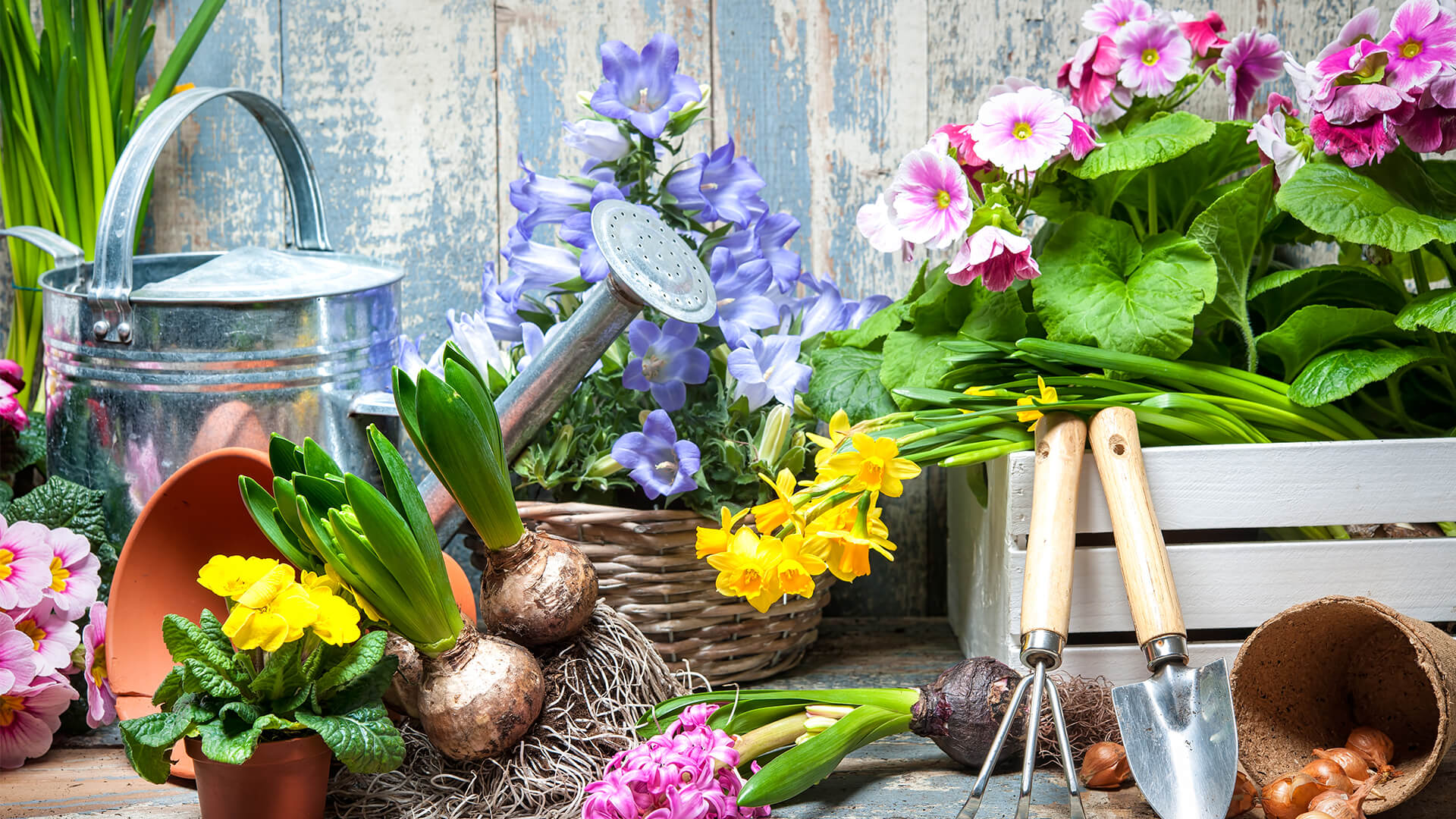Spring is on its way and now is the perfect time to start preparing and reinvigorating your garden. Below, Housetastic’s gardening expert John Dempsey presents the five top things to do to get your garden ready for spring.
When should I start preparing my garden?
Generally speaking, John Dempsey advises that you should start preparing your gardening towards the end of February and early March, as by this time the coldest points of winter should hopefully have passed. However, Dempsey does warn to keep an eye on the temperatures as starting preparations too early may have consequences. “Starting on your garden too early can damage the soil structure, which can result in an inhospitable environment for plant roots and seedlings,” Dempsey explains. “Wait until frost has lifted and loosen up compacted soil before preparing garden beds.”
Once the temperatures begin to rise Dempsey advises doing the following five steps:
1. Tidy the garden
Spring cleaning is not just reserved for indoors, in fact, it should be the first step in ensuring your garden is ready for the new season. “Take some time to carefully clear away any debris left over from winter,” Dempsey advises. “Remove weeds, dead plants and flower debris from flower beds, as ideally, you want to begin the new season with a clear garden bed.”
Dempsey continues “ensure weeds are completely removed from the soil, by the roots and eliminating the chance of them resprouting further down the line.”
2. Tend to existing plants before planting new bulbs
Before planting new bulbs and seeds, focus on what is already present in your garden. “Between late winter and early spring is the ideal time to prune back old wood on trees and certain shrubs which blood on new wood,” Dempsey advises. “In addition, trim any broken or dead branches off trees and shrubs to help keep the plants healthy.”
3. Revive lawns
Once the weather starts warming up, it is advisable to restart mowing and reseeding any winter-damaged areas. February may seem early to start tending to your lawn, but Dempsey advises this time can be optimal, just be cautious. “If possible, try and identify the soil temperature as this will provide a better indicator of whether the lawn is ready to be maintained,” Dempsey advises. “While the air may feel warm, the soil can take a bit longer to warm up from winter. There are specialised soil thermometers which can be purchased from garden centres, however, a simple household thermometer will also provide adequate readings.”
Generally speaking, the optimum spring temperature for soil and lawns is around 13 – 18 degrees Celsius.
4. Start composting
If you don’t already use compost in your garden, then Dempsey advises this should become a priority for your garden in 2022. “The benefit of using compost is enormous,” Dempsey explains. “Compost acts as a food source and a probiotic, making the soil more fertile and efficient and maintaining the soil’s ecosystem. Not only is compost beneficial for soil, but it removes carbon from the atmosphere and stores it into the soil, which is beneficial for proper regenerative farming.”
So how do you start composting properly? Dempsey advises “There are various ways to begin composting, from using a bin to store to an open heap which takes a bit longer to eventually turn into compost. There is no particularly better way to make compost, it just depends on the conditions of your garden, as the site mustn’t be subjected to temperature or moisture extremes.”
Dempsey continues “Using a bin can be preferable, as it keeps the compost in one place and can be repositioned to best suit the garden it is in. Bins also retain more warmth and moisture, making better compost faster than an open heap.”
5. Start your vegetable patch
It may seem too early and chilly to start planting vegetables, but Dempsey advises there are a few vegetables that will not only survive but thrive with early planting. “You should sow seeds indoors, ideally placed on a warm windowsill. The plants can then be transferred outside once the weather properly warms up in mid-spring. Plants such as tomatoes and even potatoes are ideal for starting indoors.”
Dempsey continues “there are more hardy vegetables which can be sown outside straight away, for example, onions and garlic, just ensure the conditions are optimal. Choose an area which allows free-draining soil, warm and sunny, and ideally sheltered from strong winds.”

































